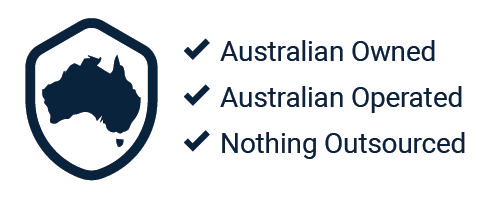
Increasing your rankings and managing to get your content onto the first page of Google is the ultimate goal of SEO. However, your SEO work should not stop there as no website is absolutely safe from a rapid drop in rankings. If your website does experience a sudden decrease, this can be due to several reasons which will be explained throughout this post and how we can best counter these ranking issues.
When it comes to SEO especially, there is no one size fits all. Each website will have its very specific reasons as to why its decreased in rankings. So be prepared to review many areas before you’re able to determine the problem. The reasons listed below are extremely common and a great place to start.
Google Algorithms Test
Google is used by billions of people and therefore it has the responsibility of being as vigilant as possible to deliver reliable information and provide the highest quality search results. This means Google has to constantly update its algorithms hundreds of times a year to ensure they remain at the top. Unfortunately, these updates have been known to affect search engine rankings and some websites have reported experiencing a fairly decent decline in rankings. It’s also pretty common for Google to not provide any announcements on upcoming updates and they are known for rarely explaining what exactly has changed.

The first thing you want to do is manually check the SERP’s to see if known websites have experienced a change in rankings. To gather more specific data, SEMrush offers a ‘Sensor’ tool that provides daily information on algorithms and how this has affected the SERP’s. You can also use rank tracking software to evaluate both your website and your competitors by viewing the ranking positions of each chosen keyword. Most rank tracking software provides a detailed history of changes for selected keywords for all the top websites, which will help you easily identify whether the issue is internal or external.
Technical SEO Issues
The technical side of SEO primarily consists of the ability of search engine robots to crawl and index your website and its content. It’s extremely important to keep on top of technical aspects whenever you’re adding or removing pages or files, as these can affect the factors listed below. To understand how search engines are reading your website, use tools such as Google’s URL Inspection Tool on a regular basis to ensure no technical errors are occurring.

These are the primary factors you want to look out for:
Page Speed
Page speed proves to be quite an important technical factor, as it affects both rankings and user experience. Essentially, the more content your website has, such as files, images and pop-ups, the longer it takes for your sites pages to load. In order to check your current page speeds, go over to Google’s ‘Pagespeed Insights’.

Here are some suggestions you can perform to increase the speed of your website:
- Decrease image sizes
- Reduce HTTP requests
- Minimise external scripts & redirects
- Optimise all the content above-the-fold
- Ensure browser caching is enabled
- Decrease the number of plugins on your CMS
301 Redirects
This is considered one of the most frequent reasons as to why your rankings may have dropped. Whenever you make changes to the URL structure of your website or move to a new domain for example, setting up 301 redirects is a must. This allows you to permanently move a page to a new location, which is generally used for moving old URL’s to new pages. 301 redirects will also help avoid search engines failing to index your page or receiving a penalty for duplicate content.
You may be thinking “how am I meant to inspect every single URL?”. Luckily, there are a number of useful SEO tools that will enhance the process of exposing any errors. One of our personal favorites is screaming frog.
Server
A server that’s not prepared for a sudden rise in traffic can potentially collapse due to being overloaded, which will ultimately bring down your website for the time being. To ensure this never happens, consider choosing a hosting service that provides you with sufficient bandwidth to support your targeted number of traffic. You can also cache your content or add a CDN onto your website.
Old Content
It’s a common question whether or not old content could be lowering your overall domain authority of your website, we believe it does. Some good points to check if your content is still valuable includes:
- Its received a good amount of social attention and quality links
- The information holds historic value and is still accurate
- Traffic and engagement levels are still sufficient
- It creates conversions
However, if you’re content lacks any of the above its likely outdated and no longer considered ‘fresh’, which gives good reasons for search engines to reduce your rankings for this page. A great way to counter this is to simply update your content. Here are some of the ways you can do so:
- Delete outdated information and implement more relevant data
- Add more media
- Ensure the introduction is engaging and draws in the reader
- Increase the overall on page word count
- Check the page for broken links and remove/redirect them where necessary
User Experience
The overall objective of search engines is to provide you with websites with the best user experience. Search engines rely on metrics such as time spent on your website, click through rates, the total number of visits, bounce rates and many more to determine the level of user experience. To maximise your user experience, make sure that you have:
A Practical Content Structure
Your content layout should make it easy for visitors to identify and extract the information they’re after. For example, text should be broken into short paragraphs and have a structure consists of multiple subheadings.
Optimised Metadata
Metadata is used within snippets, which is the very first thing users will be able to see in the SERP’s. Metadata needs to be engaging enough to convince users to click through to your landing page. They must also include consistent content that keeps in line with your landing page to avoid an increase in bounce rates.
Simplistic Design & No Pop-Up Advertisements
Complicated designs may result in instant bounce rates. This may include out of place images, colours or consistent pop-up advertisements.

Backlink Count
Having a strong link profile is an essential building block of any website optimisation. SEO practitioners sometimes go to extreme lengths to earn as many quality links as possible, so it’s important to consistently monitor your overall link profile.

To find out if your link profile has experienced any major changes, use tools such as Ahrefs Site Explorer. This tool will present data on links that you have both discovered and lost for a chosen time range. If you manage to discover links that have been lost from quality sources, attempt to find out why these may have been removed. For example, if the website has cleared your links, then you can always request to have them restored (this may happen through website updates). Similarly, if the links become broken, then they can always be fixed.
Conclusion
Trying to predict whether or not your rankings may one day drop is near impossible, but it’s easy to be prepare for such a scenario. This is why it’s extremely important to keep track of your ranking positions through the many tools available and ensure any ranking issues will be identified before losing your traffic or conversions.











